Trump’s statement on India’s dead economy : In a significant diplomatic escalation, US President Donald Trump called India’s economy “dead” and imposed a 25% tariff on Indian imports effective August 1, 2025. This statement has sparked widespread debate about the reality of India’s economic situation and the underlying factors driving Trump’s criticism. The controversy stems from broader trade tensions between the two nations, with Trump citing India’s high tariffs, defense purchases from Russia, and energy imports as primary concerns.

Shah Rukh Khan’s Historic National Film Award and Full Winners’ List
The Genesis of Trump’s Statement : Trump’s statement on India’s dead economy
Trade Tensions and Tariff Disputes
Trump’s harsh assessment of India’s economy emerged from escalating trade negotiations between Washington and New Delhi. The US President has consistently criticized India for maintaining what he describes as “among the highest tariffs in the world,” particularly on agricultural products where India imposes tariffs of up to 39% on some US goods. Trump’s statement came alongside the announcement of 25% tariffs on Indian exports, plus an unspecified “penalty” for India’s continued trade relationships with Russia.
The tariff announcement represents a significant shift in US-India trade relations, placing India among the worst-hit countries in Trump’s broader reciprocal tariff strategy. While other Asian nations like Indonesia and the Philippines secured lower 19-20% tariff rates, India found itself in the highest bracket alongside geopolitically isolated nations. This positioning reflects the US administration’s frustration with stalled trade negotiations, particularly India’s resistance to opening its agricultural and dairy markets to American products.
Hindu Terrorism Debate: Examining Amit Shah’s Statement
The Russia Connection
A critical factor in Trump’s criticism relates to India’s energy and defense relationship with Russia. India has emerged as Russia’s largest oil buyer, importing approximately 2.08 million barrels per day of Russian crude in June 2025, accounting for 36% of its total oil imports. This represents a dramatic shift from pre-2022 levels when Russia supplied less than 2% of India’s oil needs. Trump specifically referenced this relationship, stating “I don’t care what India does with Russia. They can take their dead economies down together, for all I care”.
The geopolitical implications extend beyond energy trade. India continues to purchase defense equipment from Russia while maintaining its traditional policy of strategic autonomy. This balancing act between maintaining ties with Russia while strengthening partnerships with the West has become increasingly scrutinized under the Trump administration’s pressure campaign to isolate Moscow economically.
Blockbuster Bonanza: Must-Watch Movies Releasing in India, August 2025
India’s Economic Reality: Examining the Facts
GDP Growth and Global Standing : Trump’s statement on India’s dead economy
Contrary to Trump’s characterization, India’s economic indicators present a different picture. India maintained its position as the world’s fastest-growing major economy in 2024-25, with GDP growth of 6.5%. This growth rate significantly outpaces other major economies: the United States recorded 2.8% growth, China achieved 5.2%, while advanced economies like Germany and Japan registered only 0.2% and 0.9% respectively.
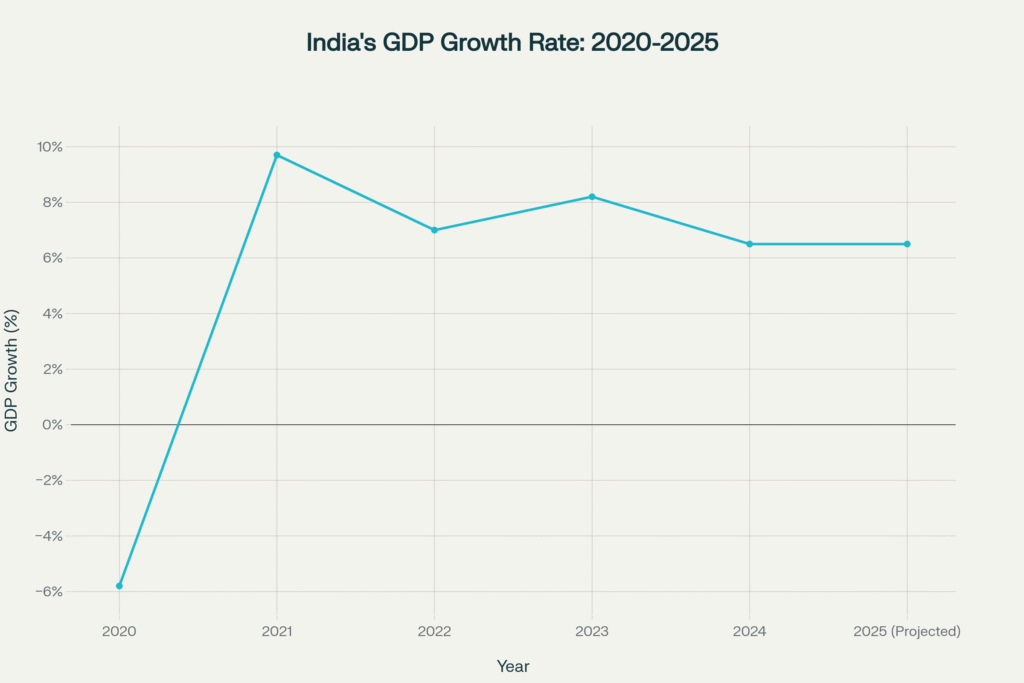
India’s economy, valued at $3.91 trillion in 2024, represents the world’s fourth-largest by nominal GDP and third-largest by purchasing power parity. Multiple international organizations, including Morgan Stanley and the IMF, project India to maintain its position as the fastest-growing major economy through 2026, with forecasted growth rates between 6.3% and 6.7%. These projections suggest that India is positioned to become the world’s third-largest economy by 2030, with an estimated GDP of $7.3 trillion.
The Safest Family Vehicle for 2025
Macroeconomic Fundamentals : Trump’s statement on India’s dead economy
India’s macroeconomic stability indicators contradict the “dead economy” characterization. The country’s government debt-to-GDP ratio stands at 81%, significantly lower than the United States’ 120% and much more manageable than advanced economies like Japan, which exceeds 200%. India’s household savings rate of 18.1% of GDP substantially exceeds the US rate of 4%, providing a strong foundation for domestic investment and consumption-driven growth.
The economy demonstrates resilience across multiple sectors. Manufacturing PMI reached 58.4 in recent months, while Services PMI rose to 60.4, both indicating robust expansion. Foreign exchange reserves have reached record highs, the current account deficit remains manageable at 0.7% of GDP, and inflation has moderated to 2.1% in June 2025, a six-year low.
Latest Scientific Research on the Effect of Alcohol on Health
The Strategic Context Behind Trump’s Rhetoric
Negotiation Tactics and Economic Diplomacy: Trump’s statement on India’s dead economy
Trump’s characterization of India’s economy as “dead” appears to be primarily a negotiating tactic rather than an economic assessment. The timing of these statements, coinciding with ongoing trade talks and the August 1 tariff deadline, suggests a strategy designed to pressure India into making concessions on sensitive issues like agricultural market access. Trade experts note that Trump has employed similar rhetoric with other trading partners as part of his broader “America First” trade strategy.
The disconnect between Trump’s statements and economic reality reflects the complex intersection of trade policy and geopolitics. While India’s economy continues to demonstrate strong fundamentals and growth prospects, the US administration’s concerns center on trade imbalances, tariff reciprocity, and geopolitical alignments rather than underlying economic health.
Sectoral Impact Analysis : :Trump’s statement on India’s dead economy
Trump’s tariffs specifically target key Indian export sectors. The 25% duty affects approximately $87 billion worth of Indian exports to the US, including pharmaceuticals (where India supplies 50% of America’s generic drugs), textiles and apparel, gems and jewelry, and technology products. The iPhone manufacturing sector, where India has become the largest exporter to the US with a 44% share, faces particular vulnerability under the new tariff regime.
However, economic analyses suggest the overall GDP impact may be limited. ICRA, Nomura, and ANZ estimate the effect at 0.2-0.4 percentage points of GDP growth, while Goldman Sachs projects the effective tariff rate at approximately 26.6% when combined with existing sectoral duties. This relatively modest macroeconomic impact reflects India’s diversified export base and strong domestic demand drivers.
Earthquake Struck Russia’s Kamchatka: Breaking News Coverage
India’s Response and Strategic Positioning
Government’s Measured Reaction : Trump’s statement on India’s dead economy
India’s response to Trump’s statements has been notably restrained, focusing on diplomatic engagement rather than retaliatory measures. Prime Minister Narendra Modi, without directly naming Trump, emphasized India’s trajectory toward becoming the world’s third-largest economy and called for renewed commitment to “vocal for local” initiatives to strengthen domestic production. Commerce Minister Piyush Goyal assured Parliament that the government would “take all necessary steps to secure and advance our national interest” while protecting farmers, workers, and small enterprises.
This measured response reflects India’s long-term strategic calculation that maintaining diplomatic channels serves better than escalatory rhetoric. The Ministry of External Affairs reaffirmed that the broader US-India partnership has “weathered transitions and challenges” and should not be derailed by short-term trade frictions.
Economic Resilience and Adaptation : Trump’s statement on India’s dead economy
Indian businesses and policymakers are adapting to the new tariff environment through market diversification and supply chain adjustments. Exporters are exploring alternative markets in Southeast Asia, Europe, and other regions to offset potential losses in the US market. The government is simultaneously pursuing trade agreements with other partners, including finalization of deals with the UK and European Union, to maintain export momentum.
The domestic economic response emphasizes self-reliance and import substitution. Recent budget measures include significant personal income tax reductions that could inject ₹630 billion in additional consumer spending, potentially boosting GDP by 0.6-0.7% in fiscal 2025-26. These measures aim to strengthen domestic demand as a buffer against external trade disruptions.

Barcelona Travel Blueprint: A Comprehensive 2025 Guide
Global Economic Context and Comparative Analysis
International Perspective on India’s Economy
Global economic institutions consistently rank India among the world’s most promising growth stories. The World Bank, IMF, and major investment banks project India to be the primary driver of global economic growth over the next decade, second only to China.

The UN forecasts India’s GDP growth at 6.3% in 2025 and 6.4% in 2026, significantly above global averages.
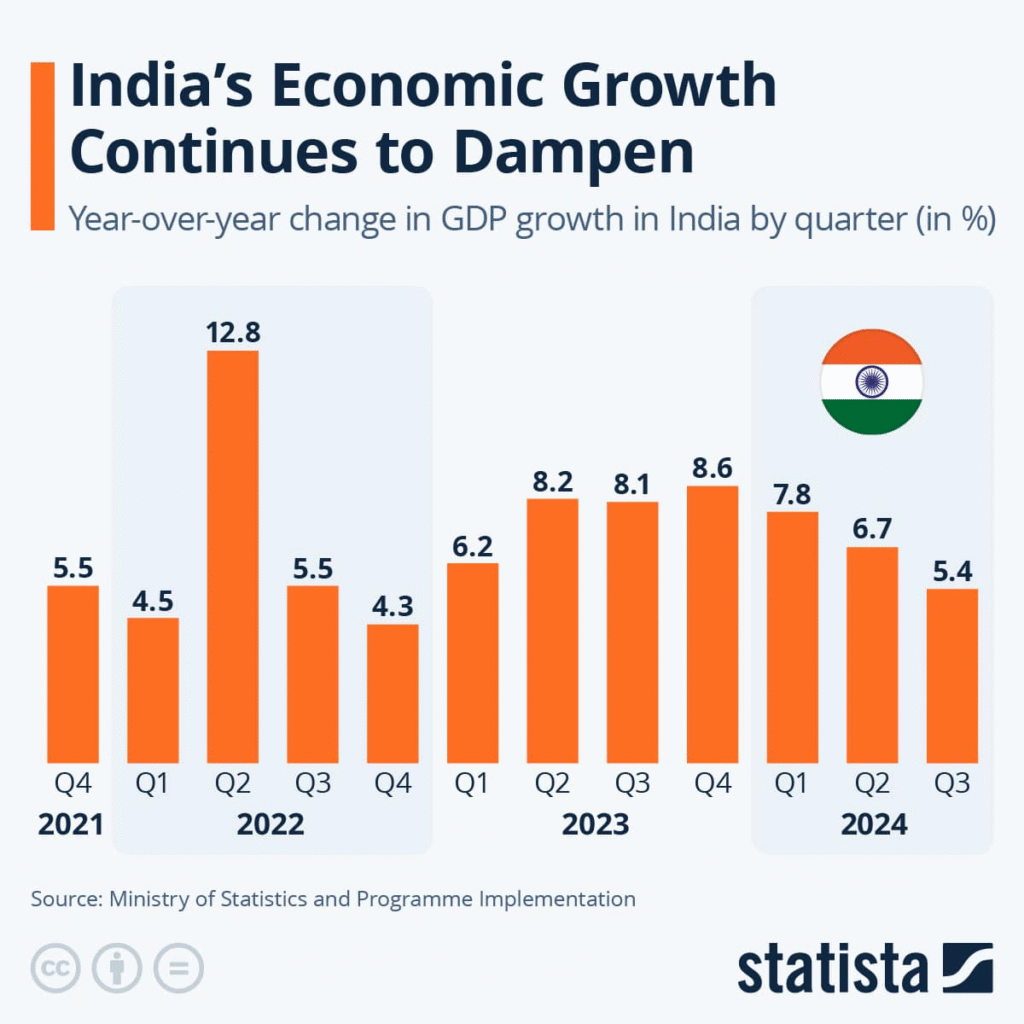
India’s economic model, driven by domestic consumption (70% of GDP), services exports, and gradual manufacturing expansion, provides resilience against global trade disruptions.
iQOO Z10R 5G Launched in India: Complete Price, Specifications & Features Guide 2025
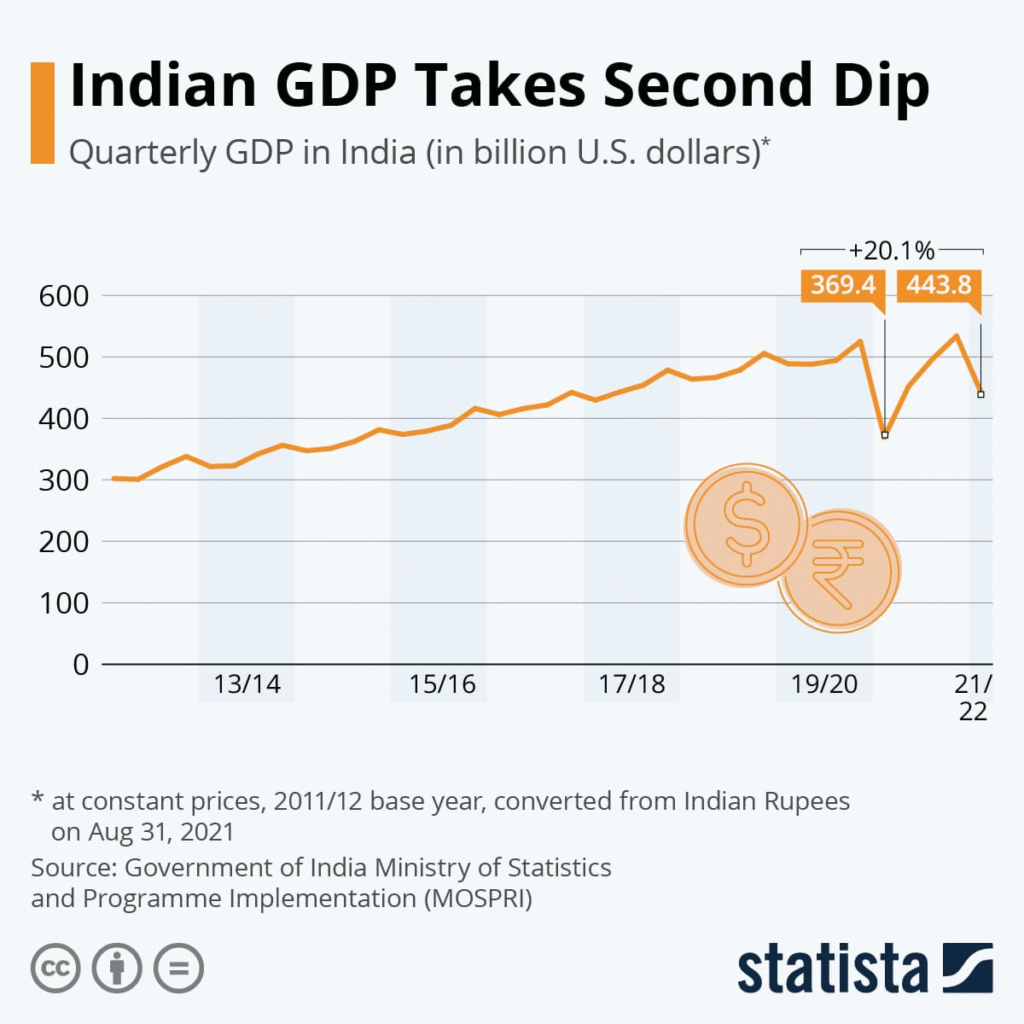
The country’s young demographic profile, with a median age of 28 years compared to 38 in the US and 39 in China, offers a sustained advantage for future growth.
MG Cyberster Launches at ₹72.49L – India’s First Electric Roadster
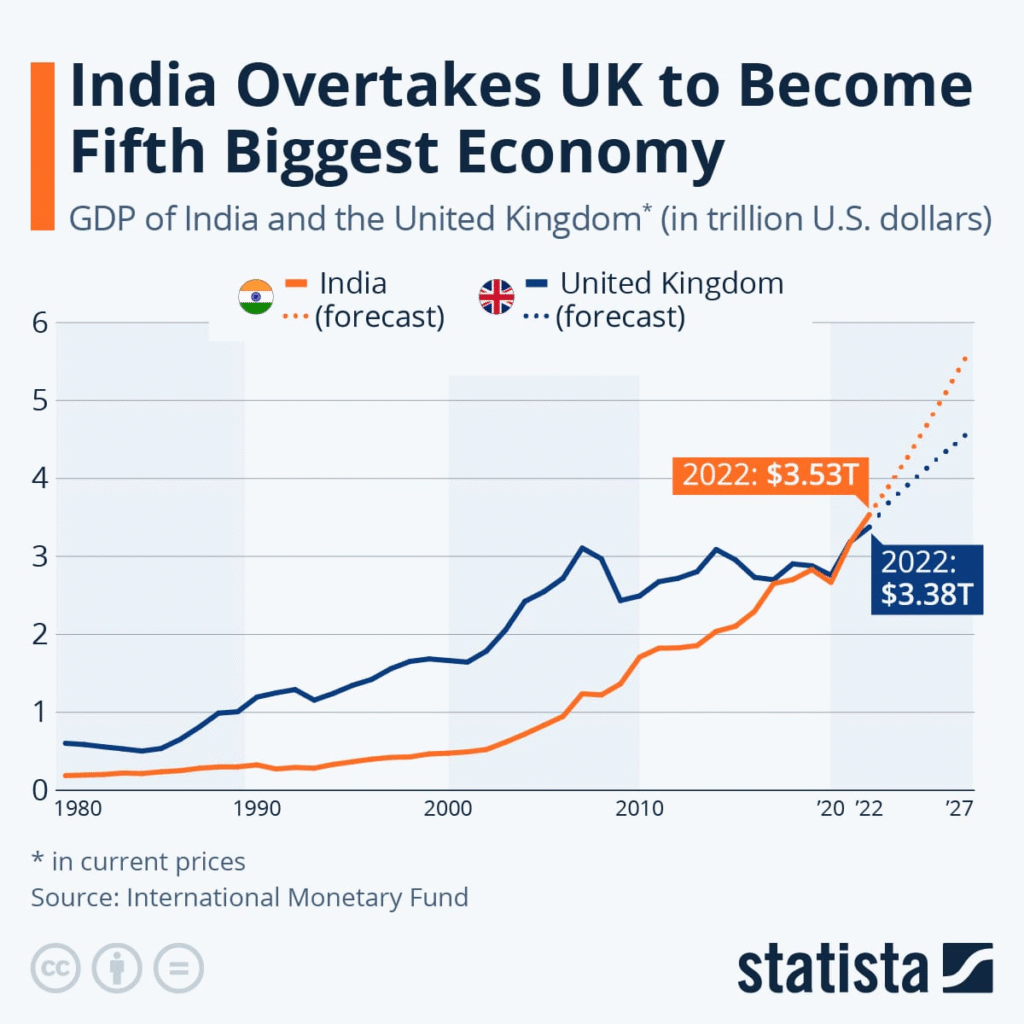
SBI PO Prelims 2025: August Exam Dates & Preparation Guide
Comparative Economic Performance
When placed in global context, India’s economic performance stands out positively among major economies. While the US recorded a trade deficit of $45.7 billion with India in 2024, this represents only 2.3% of total US trade, limiting the macroeconomic significance.
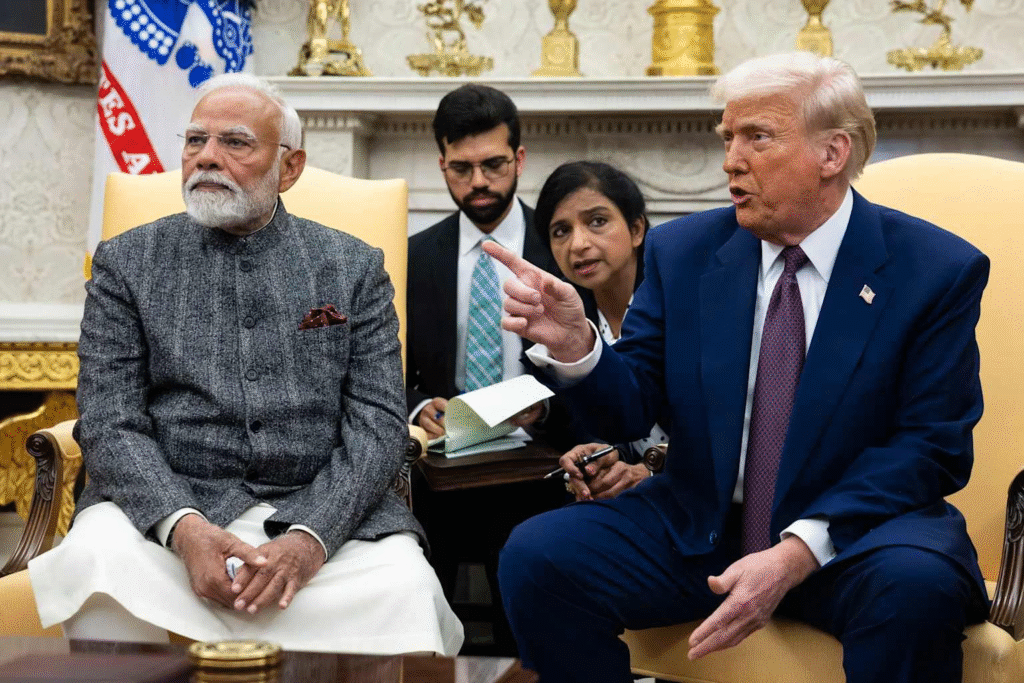
Moreover, when accounting for services trade, intellectual property payments, education services, and defense sales, the effective US trade balance with India may actually favor America by $35-40 billion annually.
India’s inflation-adjusted growth rates, industrial production increases, and expanding services sector demonstrate economic vitality that contradicts characterizations of economic stagnation. The country’s digital infrastructure, with 87% fintech adoption compared to 67% globally, positions it advantageously for future economic transformation.
Google AI Overviews: A 2025 SEO Survival Playbook
Conclusion: Separating Rhetoric from Reality
Trump’s statement characterizing India’s economy as “dead” appears disconnected from empirical economic data and international assessments. India maintains its position as the world’s fastest-growing major economy, with strong macroeconomic fundamentals, manageable debt levels, and robust growth prospects. The characterization likely reflects negotiating tactics and geopolitical concerns rather than objective economic analysis.
The broader implications suggest that US-India economic relations will continue to be shaped by complex interactions between trade policy, geopolitical alignments, and domestic political considerations in both nations. While Trump’s tariffs may create short-term challenges for specific sectors, India’s economic trajectory appears resilient enough to weather these external pressures while maintaining its growth momentum.
The controversy ultimately highlights the intersection of economics and geopolitics in contemporary international relations, where trade policy serves multiple objectives beyond pure economic optimization. As both nations navigate these tensions, the fundamental strength of India’s economy provides a foundation for continued engagement and eventual resolution of current disputes.



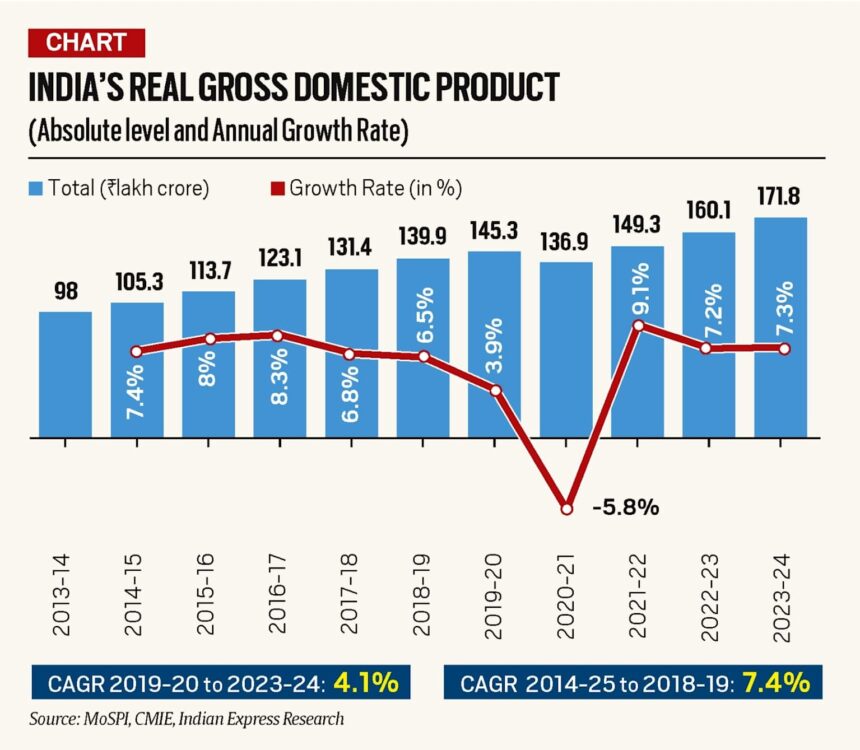




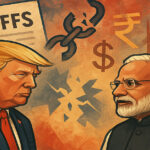


Получите прямо сейчас для решения ваших юридических вопросов!
Значение юридических консультаций для граждан. Юридическая помощь становится неотъемлемой частью жизни каждого человека.
Сложности в законодательстве часто приводят к проблемам. Обратившись к юристу, можно получить квалифицированную помощь.
Юридические вопросы охватывают много различных сфер. Компетентный юрист может объяснить все тонкости законодательства.
Успех в разрешении юридических проблем зависит от правильного выбора специалиста. Юрист с опытом знает, как быстро и эффективно решить вашу проблему.
Получите бесплатную консультацию юриста на сайте
Юридическая консультация – необходимый этап для создания правовой защиты. Квалифицированный юрист сможет разъяснить неясные моменты в законодательстве.
В нашей организации трудятся профессионалы с многолетним опытом работы. Юристы нашей компании имеют опыт работы с разнообразными юридическими вопросами.
Наши услуги охватывают широкий спектр правовых вопросов, включая гражданское и уголовное право. Мы внимательно относимся к каждому делу и учитываем особенности вашей ситуации.
Заблаговременное обращение к юристу поможет избежать многих проблем. Записывайтесь на консультацию уже сегодня.
Получите качественную юридическую помощь онлайн на сайте
не может быть недооценена. Запутанные правовые дела требуют помощи экспертов. Посещение юриста помогает понять сложные правовые аспекты.
Клиенты часто обращаются к юристам из-за недостатка знаний в праве. Иногда людям срочно требуется юридическая помощь. Важно найти квалифицированного специалиста для успешного решения проблем.
На сайте можно найти множество информации о юридических услугах. Здесь размещены контактные данные специалистов, которые готовы помочь. Важно знать, кому обратиться в случае возникновения правовых вопросов.
Запрос на консультацию к юристу — это первый шаг к решению проблемы. Не бойтесь задавать вопросы и выяснять нюансы. Юристы всегда готовы поддержать вас в решении правовых задач.
Получите прямо сейчас!
защиты прав и интересов. Недостаток знаний в правовых вопросах может привести к серьезным последствиям.
Первый пункт, который стоит обсудить — это доступность юридической помощи. В настоящее время множество экспертов предоставляет консультации через интернет. Это, безусловно, значительно снижает барьеры для тех, кому необходима поддержка.
Следующий важный момент — это выбор юриста. Подбор специалиста требует внимания к его квалификации и профессиональным достижениям. Игнорирование этих нюансов может обернуться значительными потерями.
Третий аспект, который следует рассмотреть, — это стоимость юридических услуг. Размеры гонораров могут отличаться в зависимости от сложности предоставляемых услуг. Обсуждение условий и стоимости заранее крайне важно.
Важно осознавать, что юрист несет ответственность за свои действия. Помните, что недостаточная профессиональность может привести к серьезным последствиям. Поэтому выбирайте юриста с умом, чтобы избежать проблем.
Ищете квалифицированную помощь? Получите и получите ответы на все ваши вопросы!
При выборе юриста, который сможет оказать помощь, нужно учитывать множество факторов. Каждый юрист имеет свои уникальные навыки и опыт, которые могут быть полезны в разных ситуациях.
Важно учитывать, в какой области права работает специалист. Для решения вопросов, касающихся семейных дел, лучше выбирать юриста, имеющего опыт в этой области.
Не менее важным является то, какую репутацию имеет юрист. Если юрист может поделиться успешными кейсами, это может говорить о его квалификации.
Важно также знать, какие расценки предлагает юрист за свои услуги. Обсудите все детали финансовых вопросов заранее, чтобы избежать неприятных сюрпризов.